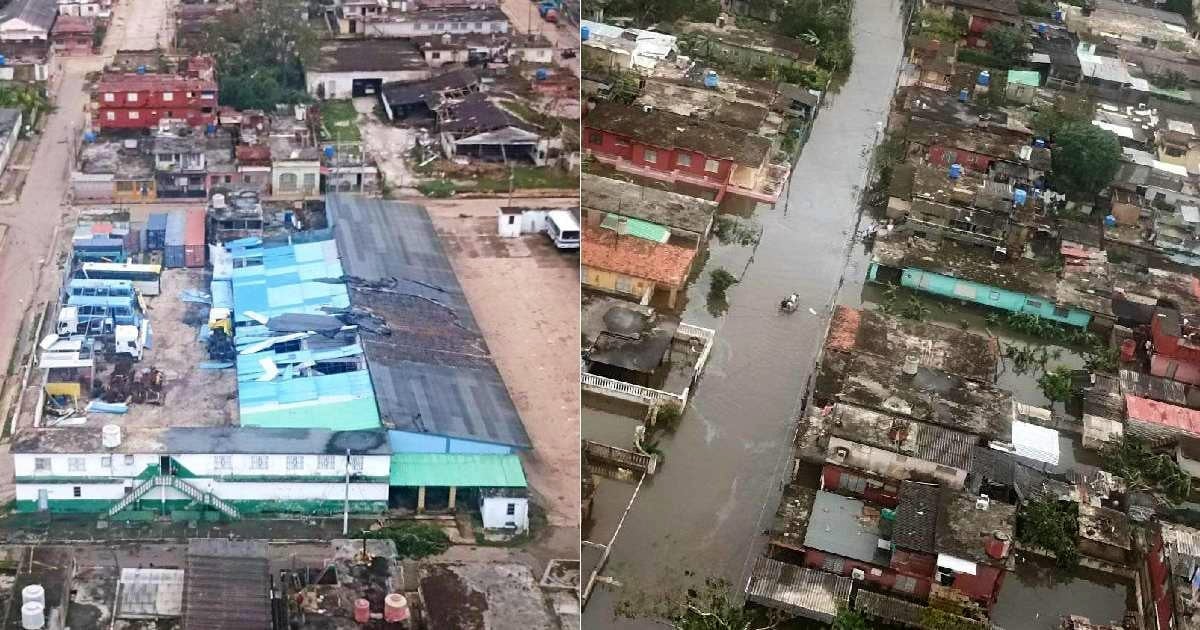The 2024 hurricane season inflicted catastrophic damage, resulting in 378 fatalities and financial losses exceeding $140 billion, placing it among the most expensive in history. Cuban meteorologist Raydel Ruisanchez shared on Facebook this Monday that the season, which ends on November 30, saw the formation of 18 tropical storms, 11 of which became hurricanes, with five intensifying significantly.
Unprecedented Hurricanes and Their Impact
Among these systems, two reached Category 5 status, a rarity seen in only five previous seasons (2005, 2007, 2017, 2019). Hurricane Beryl made history as the earliest recorded Category 5 cyclone, while Milton ranked as the fifth most intense in the Atlantic basin and the most powerful globally this year.
Out of the 18 storms, 12 made landfall, including the most destructive ones. Ruisanchez emphasized that it's not the number of cyclones but their intensity and ability to affect populated areas that matter most. He also noted that intense rainfall-induced flooding caused the highest number of deaths, highlighting the vulnerability of many regions and the critical need not to underestimate this hazard.
Cuba's Direct Encounters with Hurricanes
Cuba was directly hit by two formidable hurricanes: Oscar (Category 1) and Rafael (Category 3), both leaving a trail of devastation and significant losses. Oscar struck eastern Cuba on October 20, primarily affecting Guantánamo province. Massive flooding isolated entire communities and caused severe damage to homes, infrastructure, and agriculture in San Antonio del Sur, Imías, Maisí, and Baracoa, the hardest-hit municipalities.
The most significant loss was the death of at least eight individuals, according to official government figures, which also reported two missing persons. These numbers have not yet been updated, but residents of the affected Guantánamo areas claim there are more fatalities.
Two weeks later, on November 6, Rafael devastated western Cuba, severely impacting the provinces of Artemisa and Havana, as well as causing damage in Mayabeque and Pinar del Río. The hurricane led to the collapse of thousands of homes and other structures, a widespread blackout lasting over a week, disruptions to electrical and telephone networks, and major agricultural destruction, worsening the severe economic crisis that Cuba has been enduring for the past five years.
NOAA's Observations and Additional Noteworthy Hurricanes
The 2024 hurricane season was marked by above-average activity, with 18 named storms, 11 hurricanes, and five of great intensity, surpassing the historical average of 14 storms, seven hurricanes, and three of high intensity, according to the National Oceanic and Atmospheric Administration (NOAA).
Beyond Beryl, the scientific agency highlighted Hurricane Helene, which became the deadliest U.S. hurricane since Katrina in 2005, hitting the Gulf Coast of Florida as a Category 4 storm and resulting in over 150 direct deaths, primarily in North and South Carolina.
Milton, another of the most devastating hurricanes, made landfall in Florida as a Category 3, generating 46 tornadoes and up to 15 inches of rainfall in some areas. Its rapid intensification, with a 90 mph increase in 24 hours, was among the fastest ever observed.
Additionally, the NOAA pointed out that this season was characterized by a surge in activity following the typical peak season lull. Notably, 12 storms formed after the climatic peak of September, including seven hurricanes recorded from September 25 onward, the highest number in this period on record.
